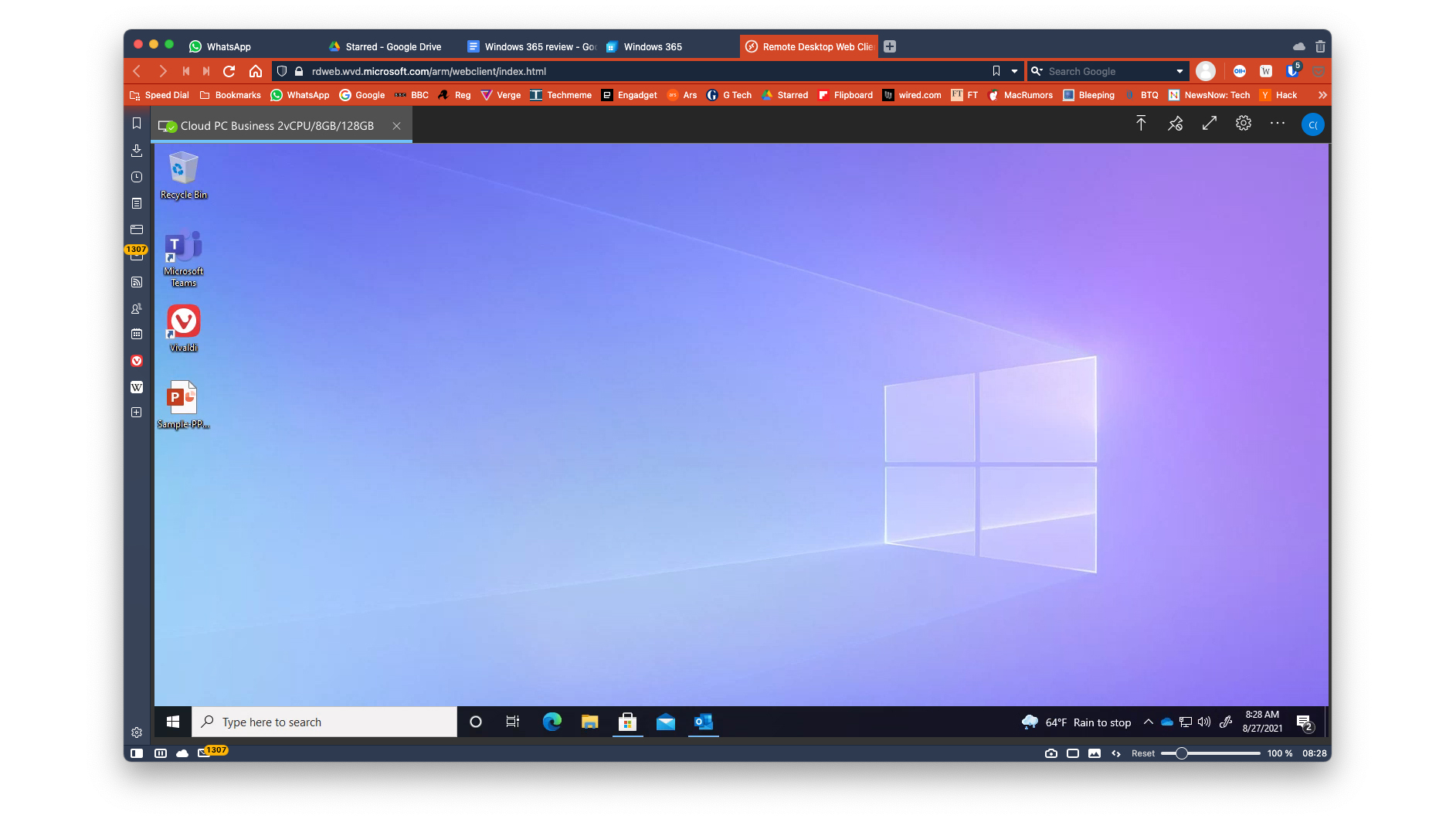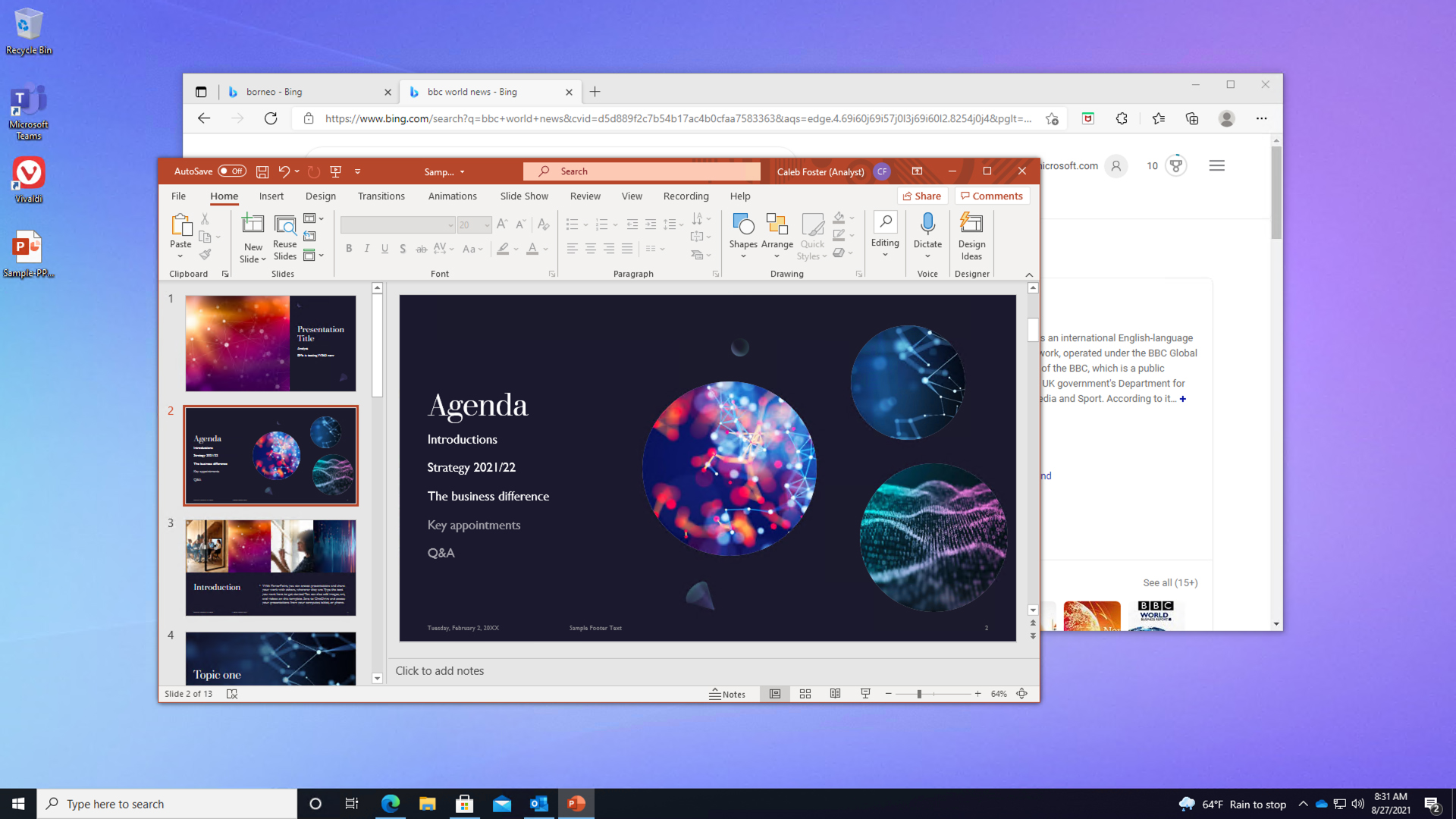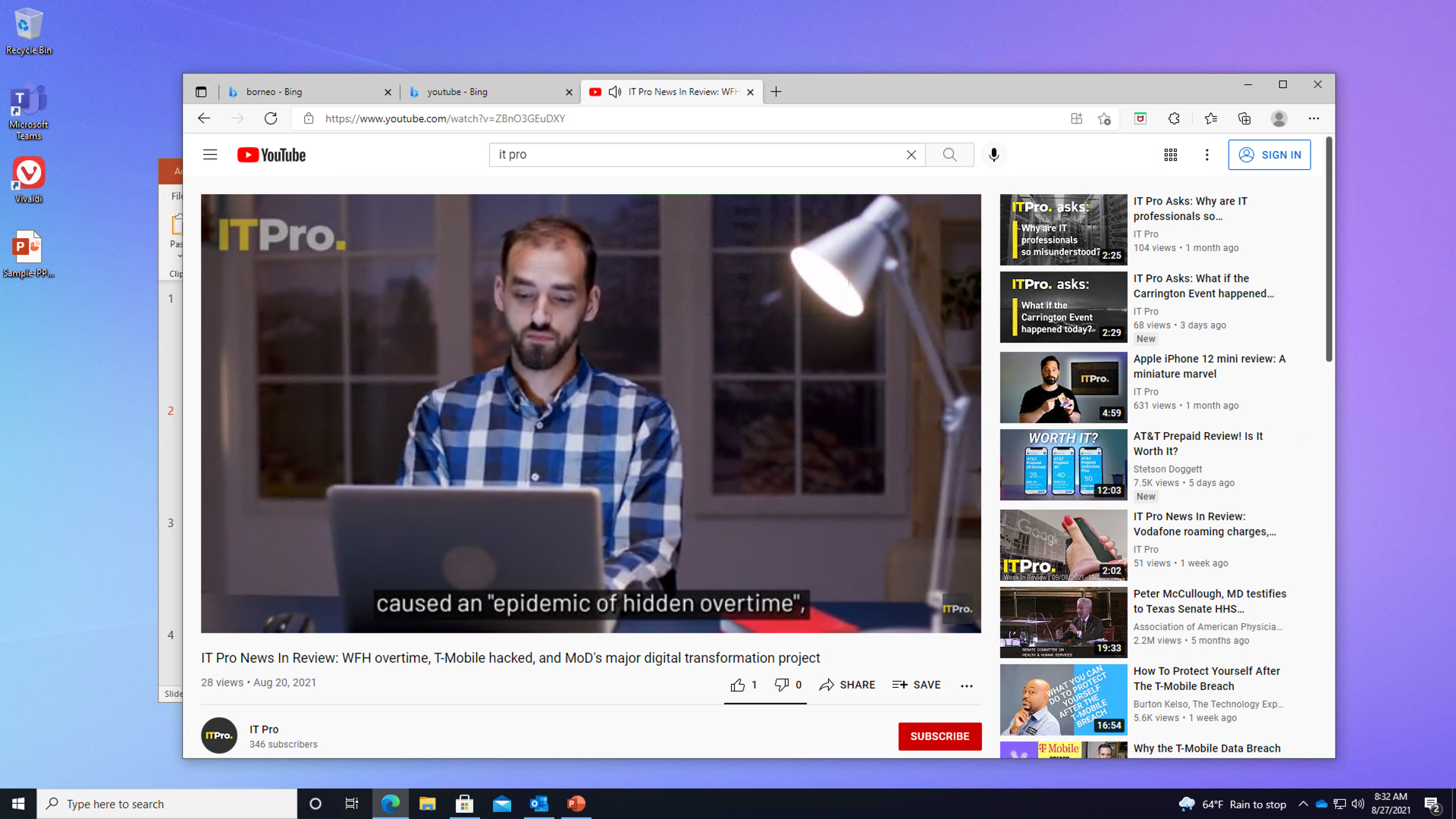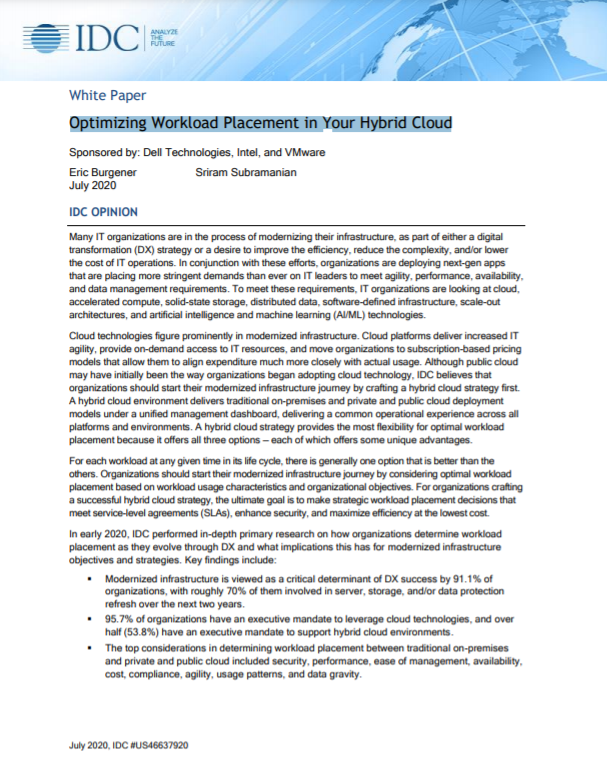Windows 365 review: Can Windows in the cloud replace your PC?
A solid start for cloud-based Windows, although not without performance problems


-
+
Easy deployment
-
+
Works well across a variety of devices
-
+
Perfect for the new homeworking era
-
-
A bewildering number of configurations
-
-
No graphics performance to speak of
-
-
Not ideal for videoconferencing

If the COVID crisis gave the PC industry a boost, with companies rushing to get computers to homeworkers, Windows 365 could pop any air left lingering in that balloon. Pitched exclusively at businesses, Windows 365 is designed to let employees stream a full Windows desktop from whatever hardware they have to hand – an old desktop PC, a MacBook, even an iPad.
In theory, it eradicates the need to equip homeworkers with company hardware, or even office workers with new computers. They can run a company-supplied Windows desktop on whatever hardware they have to hand, without the inherent security risk of doing business on personal hardware. But how well does it work in practice? We’ve spun up a Windows 365 instance to find out.
Windows 365 review: Specs and pricing
The first thing to state is that Microsoft has made Windows 365 licensing typically complex. There’s a vast matrix of plans available, starting from £20.50 per month for a 1 virtual CPU (vCPU) package with only 2GB of RAM and 64GB of storage, right through to the 8 vCPU, 32GB of RAM and 512GB storage tier that costs an accountant-wobbling £138 per month. There are, however, various discounts available for Windows Hybrid and Enterprise customers.
Microsoft supplied us with a test account with a mid-range spec of 2 vCPU, 8GB of RAM and 128GB of storage – a package priced at £38.30 exc VAT per month. That’s plenty enough to keep Office apps ticking along nicely, although the Cinebench benchmarks we ran on our virtual system revealed the vCPU (listed as a 2.6GHz Intel Xeon Platinum 8272CL) won’t make the Earth move. It’s about a third as powerful as an 11th Gen Intel Core i7-1165G7 running at 1.6GHz, for instance.
The performance of our test Windows 365 PC (currently running Windows 10 Enterprise) was mixed and dependent on how you accessed the virtual machine. You can jump into your Windows session via pretty much any modern web browser, but the experience is much smoother and more feature-packed if you use the Microsoft Remote Desktop app, which is available for Windows, Mac, iOS and Android devices.

Running Windows 365 in the Vivaldi browser on our MacBook Pro, for instance, worked okay, with the Windows desktop automatically resizing to the shape and size of the browser window. But the MacBook’s webcam wasn’t recognised when we attempted a Google Meet, and pressing print on a Word document resulted in nothing more than a PDF being made available to download.
Running that same instance using the Microsoft Remote Desktop app made all those problems melt away: the printer connected to our home-office Wi-Fi network was automatically recognised, the webcam kicked in, and as an added bonus the Windows desktop was now spread across both our external monitor and attached laptop, rather than merely being confined to a browser window.
Windows 365 review: Performance
So with Windows 365 running across your screens as if it were installed locally, does it have the performance of a local installation? Can you even tell you’re using a virtual cloud-hosted instance in day-to-day use?
Yes, you can. It’s important to state here that the test account Microsoft provided us with is hosted in the US, which introduces unwanted latency. Customers who buy Windows 365 in the UK will have an instance hosted in the UK, which should eliminate some of the lag. However, having spoken with customers who’ve purchased an instance over here, their experience is similar to ours – the micro-lag between typing a letter and it appearing on screen in your Word doc, say, is noticeable. You never truly get the sense that you’re working on a local machine.
The lag is most noticeable in latency-critical apps such as videoconferencing or video streaming. When using Google Meet, for instance, the video image of yourself has an annoying half-second lag that gives conversations with others that tedious ‘satellite-delay’ feel. Videos streamed from YouTube were sometimes out of lip-sync. Again, that latency may be reduced on a UK-hosted instance, but we’d be cautious about using Windows 365 for roles that required a lot of videoconferencing, for instance.

That’s not to say the speed of the connection in Microsoft’s data centre is poor – far from it. Running an internet speed test on our Windows desktop showed download speeds of around 500Mbits/sec and uploads hitting a ridiculous 2,670Mbits/sec. Downloading a 2GB file to our virtual desktop took just under a minute, which is much faster than many home connections in the UK would ever be capable of. If an employee’s job involves lots of big file transfers, this set-up could prove much more efficient than a local machine, where the bottleneck is the speed of their broadband connection. (Watch out for the data caps on Windows 365, mind.)
Windows 365 review: Device compatibility
RELATED RESOURCE

Optimising workload placement in your hybrid cloud
Deliver increased IT agility with the cloud
Microsoft should also be applauded for making it easier for employees to work on any device they choose. Installing the Microsoft Remote Desktop app on an iPad Pro worked superbly – it’s the best use case we’ve found yet for the mouse support that Apple introduced into iPad OS in 2020. Could you realistically use an iPad Pro as a portable Windows laptop with Windows 365? Absolutely, especially when travelling (provided you can get a fast enough broadband connection, of course).
Installing Microsoft Remote Desktop on a Chromebook was a similar story, thanks to its support for Android apps. Chromebooks and iPads are the types of devices employees are most likely to have at home these days. Windows 365 could not only make BYOD much more viable than ever, it could also transform the type of devices companies supply to their employees.
Windows 365 review: Verdict
Windows 365 isn’t going to be the answer for everyone. There’s not a sniff of graphics grunt for power users, for example, and that slightly laggy experience may irritate anyone whose work requires constant split-second accuracy. Calculating the TCO with so many tariffs on offer will also give IT managers sleepless nights.
All that said, Microsoft has offered us a glimpse at what is arguably the future of computing and it has many attractions – not least a much-reduced hardware management headache for companies with lots of remote employees. Who’d have thought the biggest threat to the hegemony of Windows hardware in businesses would have emerged from Microsoft itself?
Get the ITPro daily newsletter
Sign up today and you will receive a free copy of our Future Focus 2025 report - the leading guidance on AI, cybersecurity and other IT challenges as per 700+ senior executives
Barry Collins is an experienced IT journalist who specialises in Windows, Mac, broadband and more. He's a former editor of PC Pro magazine, and has contributed to many national newspapers, magazines and websites in a career that has spanned over 20 years. You may have seen Barry as a tech pundit on television and radio, including BBC Newsnight, the Chris Evans Show and ITN News at Ten.
-
 ‘Phishing kits are a force multiplier': Cheap cyber crime kits can be bought on the dark web for less than $25 – and experts warn it’s lowering the barrier of entry for amateur hackers
‘Phishing kits are a force multiplier': Cheap cyber crime kits can be bought on the dark web for less than $25 – and experts warn it’s lowering the barrier of entry for amateur hackersNews Research from NordVPN shows phishing kits are now widely available on the dark web and via messaging apps like Telegram, and are often selling for less than $25.
By Emma Woollacott Published
-
 Redis unveils new tools for developers working on AI applications
Redis unveils new tools for developers working on AI applicationsNews Redis has announced new tools aimed at making it easier for AI developers to build applications and optimize large language model (LLM) outputs.
By Ross Kelly Published
-
 Google layoffs continue with "hundreds" cut from Chrome, Android, and Pixel teams
Google layoffs continue with "hundreds" cut from Chrome, Android, and Pixel teamsNews The tech giant's efficiency drive enters a third year with devices teams the latest target
By Bobby Hellard Published